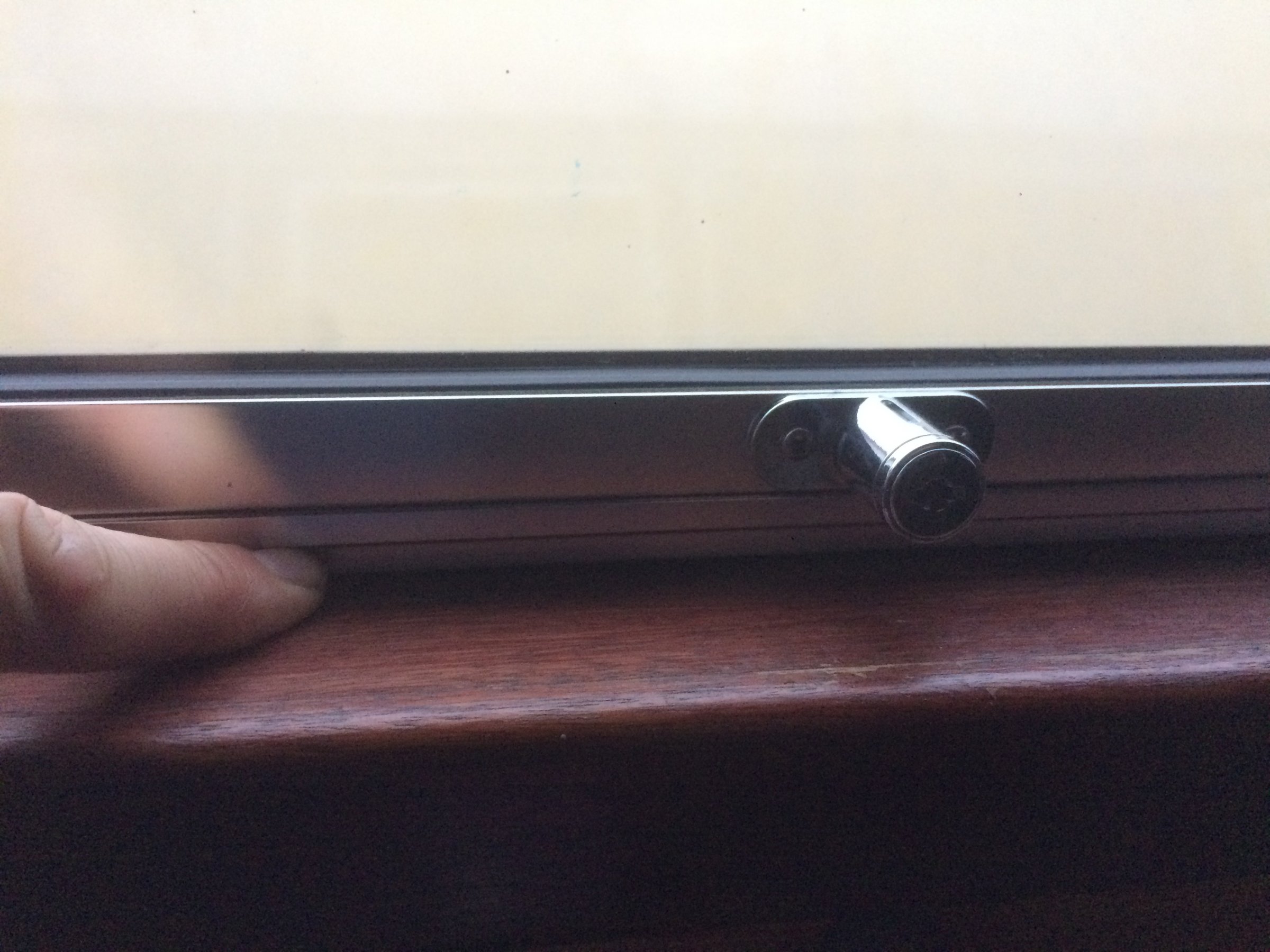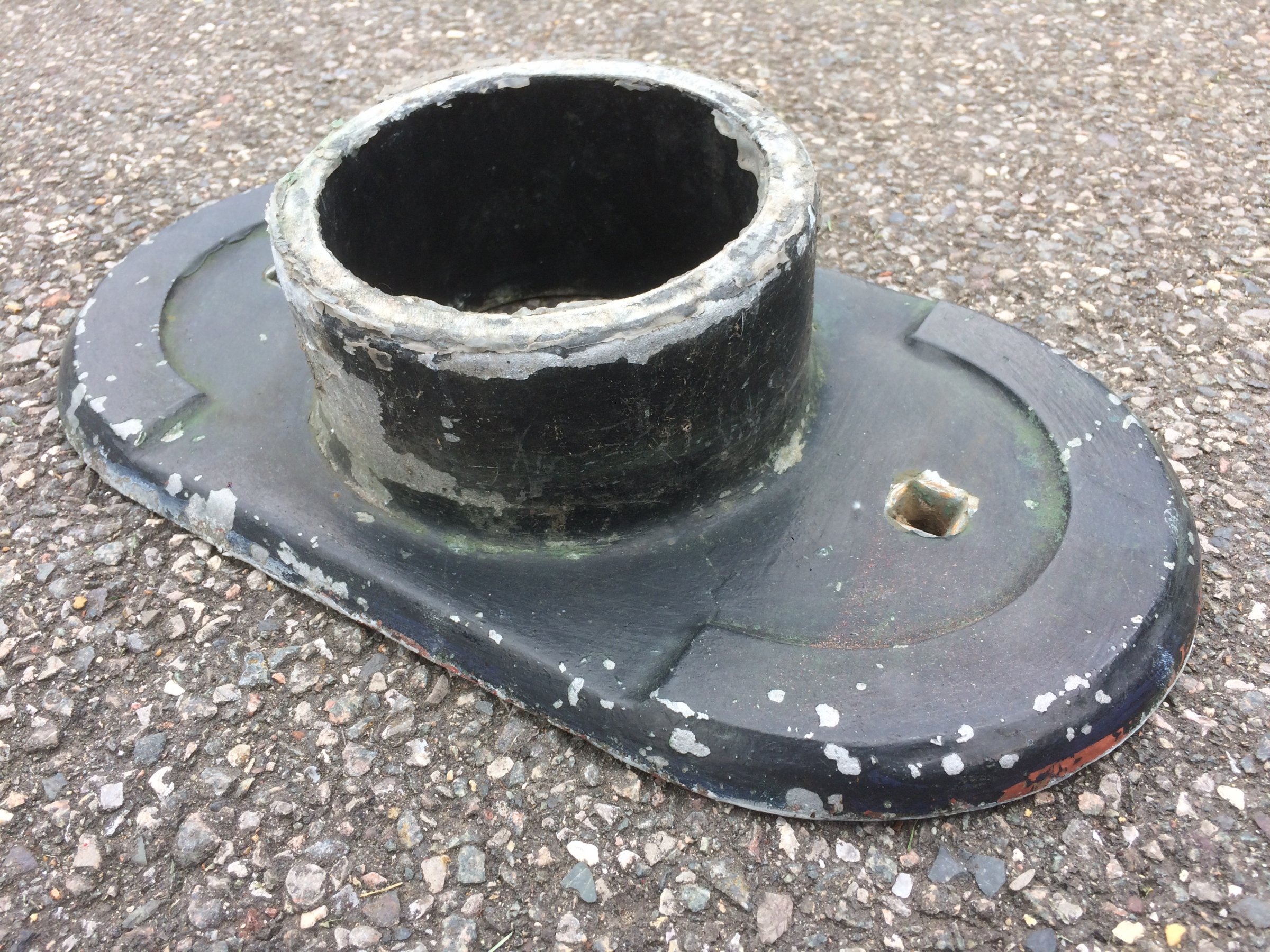

Yeletah
Member-
Posts
23 -
Joined
-
Last visited
Content Type
Profiles
Forums
Events
Gallery
Blogs
Store
Everything posted by Yeletah
-
I'll soon be taking a trip up the Thames from Brentford to Oxford on a 70' narrowboat. The boat currently has no anchor so I need to establish exactly what I need in terms of anchor weight, size and length of chain and warp length. I've been in touch with an anchor supplier to ask this question after providing the same info and they suggested the following options: 20kg Brittany anchor, 10m of 8mm chain and 20m warp or 16kg Brittany anchor, 9m 10mm chain and 20m warp Both options weigh a total of around 35kg although I'm erring towards option 2 as a 16kg anchor might be easier to pick up and manoeuvre overboard than the 20kg version. The supplier did suggest I got a second opinion hence this post but all thoughts welcome!
-
It is indeed semi transparent so yes, that makes sense! Thanks
-
I have a Morso with back boiler, leading to 2 radiators further down the boat, the furthest of which has a header tank attached. I decided to check the fluid level in the header tank in anticipation of the cold weather and discovered to my horror a layer of slimy mould sat on top. This in itself is relatively simple to get rid of - detach header from radiator and drain - but my concern is whether I should consider draining the entire system? Or is it likely that the mould has only occurred where the fluid is exposed to the air (there are a couple of small unused optional inlet/outlet holes in the tank)?
-
Sorry, no leaks! I just want to close the gap between the window frame and the trim. I saw on a friends boat he had a clear sealant in the gap so I just wondered if there's a particular product which would be best or would any old flexible sealant do?
-
Can anyone tell me what the best sealant would be to fill the gap between the window frame and wooden trim? Just to be specific, the area where my finger is pointing in the photo. Thanks
-
Is there any reason I shouldn't powder coat my chimney collar? It might sound like an obvious question but I'm just wondering whether the heat is likely to affect the powder coat.
-
There is a 3" diameter hole on the roof of my boat (possibly originally intended as an exhaust outlet) which has at some point been filled. The problem is that the filler has cracked over time from the constant expanding and contracting of the surrounding steel, thus revealing a circular crack. I'm due to get the roof repainted in a few weeks so I'd really like to fix it in such a way that the filled hole remains concealed. I can't weld underneath as there's no access without removing a lot of wooden ceiling panelling, and I'm trying to avoid simply welding a plate on top. Also, I cannot make use of the hole by attaching a mushroom vent to it because it's literally right at the back next to the sliding hatch so it might look a bit odd. I'm wondering if there is some kind of flexible filler which can expand with the metal? I think the current filler is probably fibreglass so that rules that out as a solution. Any suggestions are most welcome!
-
Brilliant advice. Thanks everyone
-
Makes a bit more sense. So an expansion tank is to do with regulating pressure rather than providing an overflow. Gotcha
-
Could you expand on this? Just wondering how replacing the PRV would solve it. My understanding of a PRV is that it allows water through when the pressure meets a certain threshold which seems to be what it is happening. My technical boat knowledge is a bit lacking in the plumbing department so apologies if I'm missing something obvious!
-
Hi I have a calorifier with a PRV fitted which expels water into a water bottle. This works fine in a Heath Robinson kind of way but it's a bit of a pain emptying the bottle every few days or even more frequently if I've been using the hot water more than usual. Also, if I forget to empty it I end up with a lovely wet patch which then needs drying out. I would love to find an alternative solution to the overflow bottle. I have a couple of ideas which I'm hoping will generate useful feedback: 1. There is an unused outlet hole in the engine bay (to the left of the cupboard where the calorifier is). Is there any reason I couldn't extend the pipe from the PRV directly to an outlet? 2. I've been looking at expansion tanks. I don't understand fully how they work - the PRV sends water to the expansion tank but then would the tank need emptying or does the water somehow end up back in the calorifier? What I'm after is a system that deals with overflow in a more elegant and self sufficient way than the current plastic bottle. All suggestions are welcome!
-
I've been recommended Dulux Endurance for the topcoat FYI
-
Not sure about topcoat yet. Can I use either on Zinger BIN? How long would an oil based topcoat take to dry? Also, how many litres would I need for a 20m/70' boat? I'm doing the ceiling and the wall from the gunwales up. I know this is bit of a difficult one to answer but is there a rough rule of thumb for litres of paint per sq m?
-
Thanks folks. Is this the stuff? http://www.screwfix.com/p/zinsser-b-i-n-shellac-based-primer-white-1ltr/29661
-
Just to clarify, the T and G is 20 years old and is varnished and my plan is to paint it. I'm hoping I won't need to sand all the way down to the wood - it's a 70' boat with lots of T and G! I've heard somewhere that Zinsser Bin sealant/primer works well. Does anyone have any experience of this?
-
I'm about to have the inside of my boat gutted, updated then I'm planning to paint the tongue and groove on the walls and ceiling. The guy I've booked to do the work has recommended painting the tongue and groove with a PVA/water mix to seal it before painting. Is this a common practice? Is it worth doing?
-
Thanks for all the advice folks. I'm hoping to get an engineer to look at it next asap. Anyone know of any mobile marine engineers based in West London out of interest?
-
I filled up the tank at a marina in Reading where I bought it from and drove (?) it down on the Thames over 3 days without a glitch. I do know that there is currently 8 inches or so of fuel remaining in the tank so yes, maybe Flyboy is right. Out of interest, I've seen these as a solution for removing water from a diesel tank: http://www.ebay.co.uk/itm/Oil-Tank-Dryer-Fuel-Diesel-Petrol-Bio-Diesel-Storage-IBC-Tank-Water-Remover-/271102750745 Anyone used these with any success?
-
I have recently acquired a narrow boat with a slight engine issue. Although the tank has sufficient diesel, the engine cuts out after 30 seconds. There is also an on board generator which also cuts out after a short while which leads me to think the problem is fuel supply as they both share diesel from the same tank. The boat is otherwise mechanically sound and the engine has apparently never missed a beat which again possibly points to a fuel supply issue. I don't have any info about the engine other than it is a Perkins D3 3cyl. diesel engine – serial no: D3-13254/D2-864309 with a PRM 160 gear box. I've included a photo which may or may not help identify the model. The chap I bough the boat from is away so I'm unable to ask him about the engine model for the time being. If anyone can suggest anything or identify the engine that would be useful.
-
5 posts, eh? Well this is number 3...
-
Thanks for the advice folks. I try the resistive load option and see what happens ;-)
-
On my narrowboat I have a Paguro/Farymann 4kw cocooned diesel generator in the engine bay and a Mastervolt pure sine wave inverter. I recently bought and installed a washing machine (Zanussi 1300w) which I was hoping to be able to run by switching to generator power on my selection panel. Unfortunately the washer refused to power up from the generator and I had to switch to 230v inverter and run the engine instead. The chap I bought the boat from told me that the generator works on the same principle as a site generator in that it does not deliver power until an appliance demands it by being switched on. I’m a little confused about this as I tried a small fan heater on generator power and it worked straight away. My next question regards heating and the generator. The boats hot water at the moment comes from a calorifier which is great except I’d like hot water without having to run the engine (I do not have access to shoreline power either). My plan was to fit a new calorifier with a 1kw immersion heater, which I could then run from 230v via the generator. My concern is that if I’m having trouble powering the washing machine how can I be sure the generator will power an immersion heater? Any feedback would be useful!



